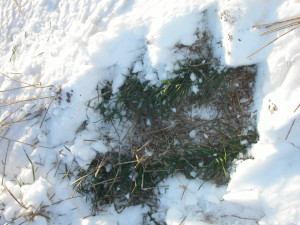
Frost heave can cause serious damage to basements.
Frost heave can cause serious damage to basements. Sometimes the heaving soil around a basement actually freezes to the basement wall, an action known as adhesion freezing, or ad-freezing. However, this doesn’t happen when the basements is heated. A heated basement (insulated or not) loses heat to the soil surrounding it. This heat loss pulls moisture away from the foundation walls not allowing the soil around it to freeze.
Soil that is more susceptible to frost is fine grained, moist soil. Water as well as subfreezing temperatures that penetrate beneath the surface is also a required condition for frost heave. Scientists call the depth to which freezing temperatures can penetrate the ground the freezing plane or frost front. The frost line is the depth to which the freezing plane can extend to in any given region. This can range anywhere from a few inches to feet deep. The frost line in some areas in the northern U.S. region is more than six feet deep.
You can control frost heave by controlling one of the three required elements (frost-susceptible soil, freezing temperatures, or water). Building codes mandate that footings or piers supporting a structure extend below the local frost line. Another common practice in areas susceptible to frost heave is backfilling gravel around piers to promote drainage or using a sleeve to prevent ice from gripping the concrete. Another trick in new construction is to pour footing bases that resist upward movement.
Replacing fine-grain soils with coarse material helps prevent heaving. Adding proper drainage systems to the property can also help reduce the moisture in the soil and therefore reduce the potential for frost heave.